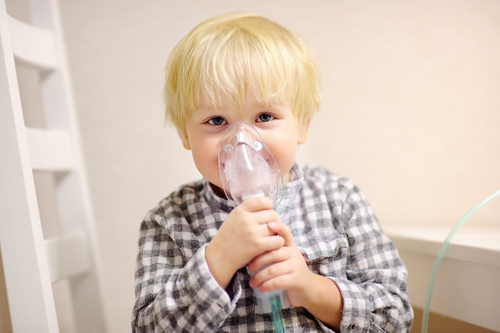Adempas Safe and Effective in Treating Young Boy with Severe PAH, German Case Study Finds

Adempas (riociguat) can be a safe way to treat children with severe pulmonary arterial hypertension (PAH) who don’t respond to first-line standard therapies, concludes a case report published in the journal Pulmonary Circulation.
Despite recent medical advances, PAH remains a complex disease with poor outcomes in both adults and children.
PAH is characterized by vessel damage caused in part by excessive production of signaling factors that promote inflammation and decline of natural vasodilators, such as prostacyclin and nitric oxide. This biological deregulation worsens PAH, which can lead to heart failure and ultimately death.
PAH therapies focus mostly on restoring vessel dilation features, which improves blood flow and overall disease symptoms. Other new treatment strategies are being designed to counteract inflammation and cellular proliferation associated with the disease.
Adempas, an approved PAH therapy developed by Bayer, plays a dual role. It promotes vasodilation by interacting with nitric oxide, and stops inflammation, fibrosis and remodeling of vessels tissue.
Results from Phase 3 PATENT trials (NCT00810693 and NCT00863681) showed that oral administration of adjusted doses of the drug, three times daily, could significantly improve exercise capacity and pulmonary function, while delaying disease progression in adult PAH patients.
Despite the positive effects of Adempas in treating adult PAH, no information is available on its use in children.
In the study, “First-in-Child Use of the Oral Soluble Guanylate Cyclase Stimulator Riociguat in Pulmonary Arterial Hypertension,” a German research team presented the case of a 10-month-old infant diagnosed with severe pulmonary hypertension. After several clinical evaluations, the team was able to confirm that the boy had severe capillary PAH.
Based on his clinical condition, doctors began treating the boy with the endothelin-1 receptor antagonist (ERA) Tracleer (bosentan) plus the calcium channel-blocker Norvasc (amlodipine). But follow-up evaluations confirmed that his clinical status was unchanged and that the child had persistent systemic PAH.
At this point, they changed treatment by removing Norvasc and adding the prostaglandin inhibitor Revatio (sildenafil) plus oral prednisolone to the treatment plan. The boy, already three and a half years old at this point, was then referred for follow-up in a specialized clinical center.
With genetic testing and additional functional evaluations, the new clinical team confirmed that the boy had idiopathic PAH, with an inadequate response to standard therapy. That team decided to replace Revatio for Adempas. But since there are no dosage indications for use of Adempas in children, the team set the drug’s dose and regimen based on available clinical data in adult PAH patients.
After six months of Tracleer plus Adempas (three times 1 mg per day) combo therapy, the boy showed improved vessel reactivity, reduced right ventricular wall thickness, and reduced NT-proBNP levels, a biomarker of the disease. His parents also reported that the child was more active and slept better.
“To the best of our knowledge, this is the first report on the use of oral riociguat [Adempas] for the treatment of severe PAH in childhood,” researchers wrote.
No serious adverse effects were reported during the 13 months the boy received Adempas. These positive results are in accordance with clinical data collected from the Phase 3 RESPITE study (NCT02007629), in which results from 51 adult PAH patients showed that Adempas can be an effective therapy for patients who fail to respond to phosphodiesterase-5 inhibitors.
“Based on our very recent, still limited experience, we propose that off-label use of oral riociguat [Adempas], when carefully dosed, may be considered in selected children with severe PAH after comprehensive, hemodynamic evaluation,” the team concluded. “However, such a strategy needs to be further studied in larger case series and — even more preferable — in a protocol-driven prospective pediatric PAH study in the future.”







